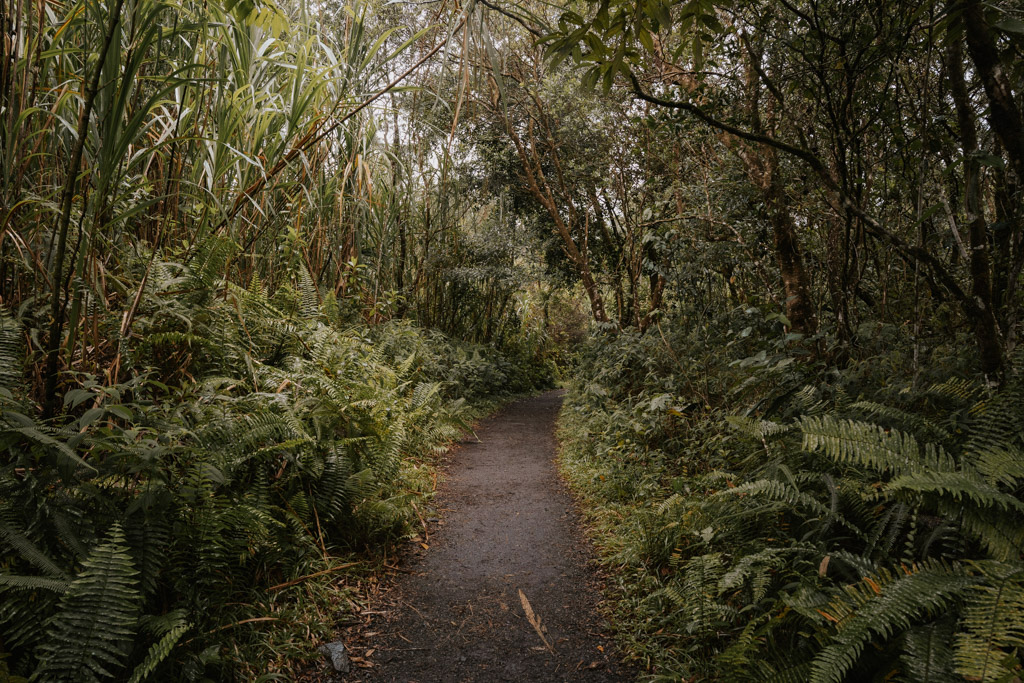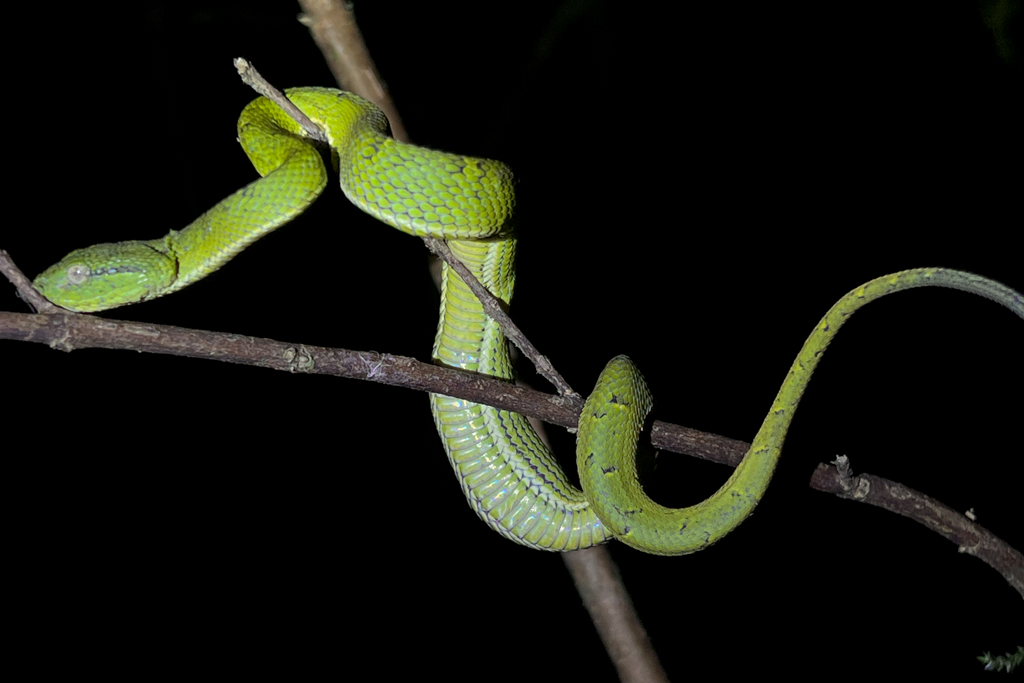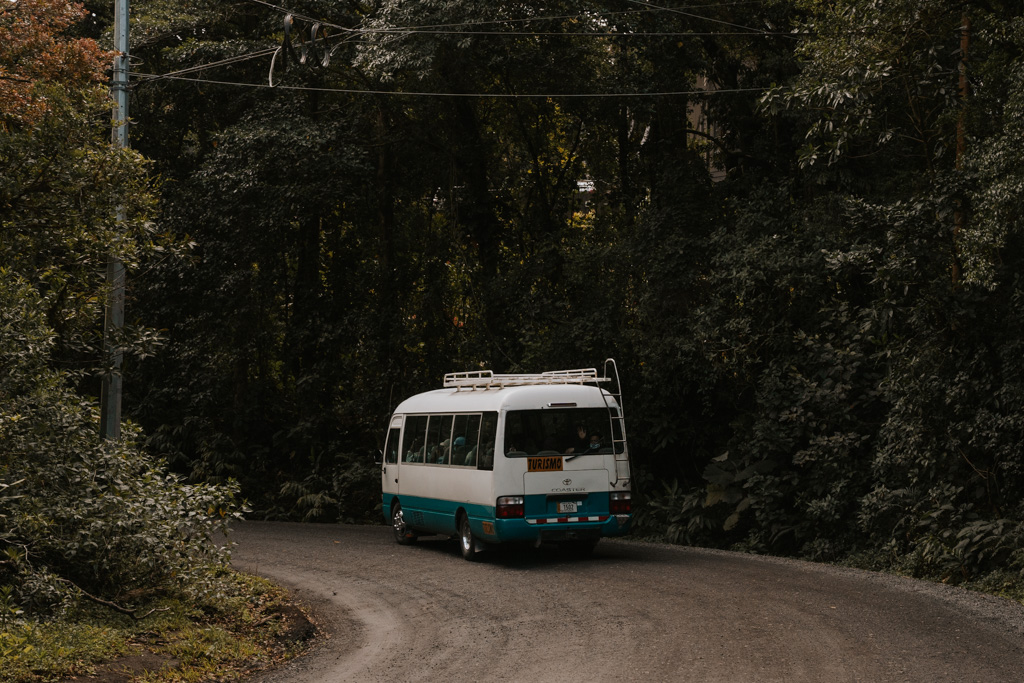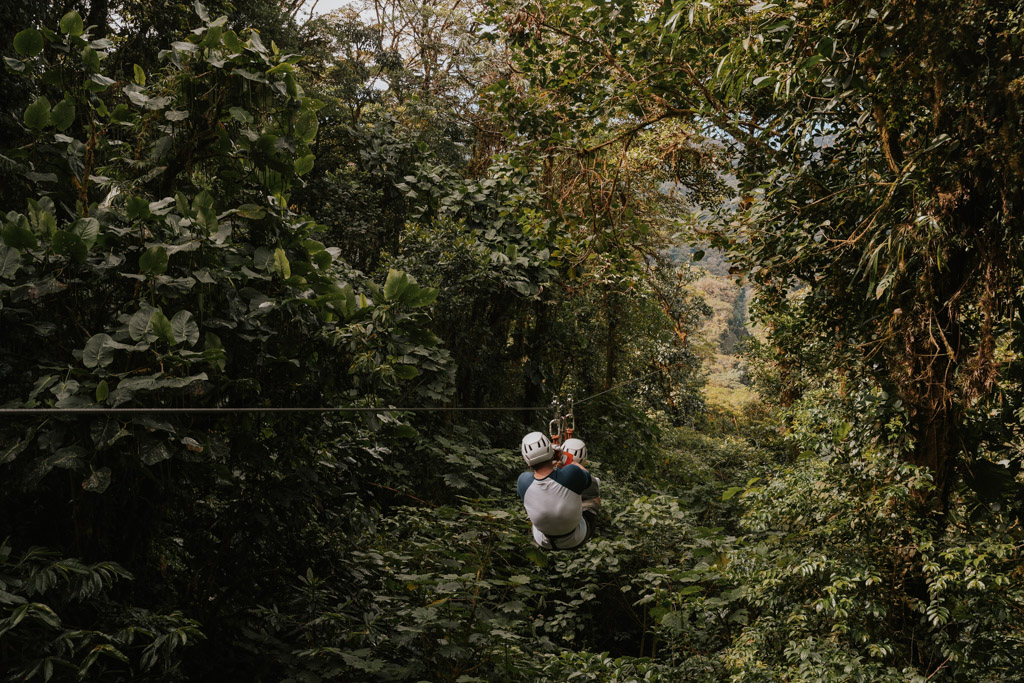Worst Time to Visit Costa Rica in 2024

Looking for the best and worst time to visit Costa Rica? I have you covered.
Costa Rica is a captivating mix of lush rainforests, diverse wildlife, and pristine beaches, which I was fortunate enough to experience during an unforgettable two-month journey.
Yet, timing your visit is crucial due to the country’s tropical climate. In this guide, I’ll help you navigate the weather patterns and the high tourist seasons to figure out the worst and the best time to visit Costa Rica.
Nestled between the Caribbean Sea and the Pacific Ocean, Costa Rica enjoys tropical weather year-round. However, ‘tropical’ often brings abundant rainfall, especially if you plan to explore the country’s verdant interiors. Yet, even a sudden downpour can’t dampen the thrill of hiking to a remote waterfall – I would know! I loved my rainy hike to Rio Celeste.
Besides the weather, factors like tourist crowds, travel costs, and regional events can influence your trip. The dry season brings sunny skies but also peak prices and bustling tourists.
Conversely, the rainy season promises serene, less-crowded beaches, and a cost-effective, authentic experience.
So, let’s dive into the specifics of Costa Rica’s climate, the optimal times for various activities, and month-by-month weather in Costa Rica analysis. Whether you’re a thrill-seeker, wildlife lover, or a beach aficionado, this guide will help you plan an ideal Costa Rican getaway, avoiding any potential weather or crowding pitfalls.
*This post may contain affiliate links, which means I may receive a commission, at no extra cost to you, if you make a purchase through a link. Please see my full disclosure for further information.
What is the Worst Time to Visit Costa Rica?
Now, to the question that’s probably been burning in your mind: when should you avoid Costa Rica?
If I were to give you a quick answer, I’d say the rainy season, also known as the “green season,” which spans from May to November. It’s deemed the worst time to visit Costa Rica due to the high levels of precipitation. But does that mean you should avoid this season altogether? Well, not quite.
During my two-month trip, I found out that the rainy season can also be incredibly rewarding.
Yes, you’ll encounter daily downpours, usually in the afternoons, but the mornings are typically sunny and vibrant. Plus, the rain breathes life into Costa Rica’s rich biodiversity. The forests are lush, waterfalls are at their fullest, and the wildlife is exceptionally active.
Not to mention, fewer tourists visit during this period, so you’ll have those pristine beaches, national parks, and hiking trails pretty much to yourself!
If you’re not a fan of rain and high humidity, or if your plans primarily involve sunbathing at the beach or participating in water sports, you might want to stick to the dry season.

Best Time to Visit Costa Rica
Having experienced Costa Rica’s weather firsthand, I’d recommend visiting during the dry season, between December and April.
You’ll encounter less rain, less humidity, and lots of sunshine, making it the ideal time to enjoy Costa Rica’s famed beaches, go wildlife spotting, or indulge in outdoor adventures. It’s the perfect time for a beach holiday in Guanacaste, wildlife watching in Corcovado National Park, or surfing in the Nicoya Peninsula.
If you’re looking to beat the crowds, early December and late April offer a delightful balance between good weather and fewer tourists. These are what are called “shoulder seasons“, offering a delicate blend of the green and dry seasons.
During these months, I was able to enjoy the uncrowded beaches of Nosara and the majestic, unspoiled landscapes of the Monteverde Cloud Forest.
But perhaps the most compelling reason to visit Costa Rica during the dry season is the opportunity to explore its incredible biodiversity.
Whether you’re a birdwatcher eager to spot the resplendent quetzal, an adventurer yearning to zipline through the rainforest canopies at Selvatura Adventure Park, or a nature lover keen on discovering the hidden gems of the Osa Peninsula, the dry season will not disappoint.
Just keep in mind that the peak dry season, from December to April, also coincides with high tourist traffic. Therefore, if you’re after a more tranquil getaway, consider visiting in the shoulder months of May or November.
A Note about Costa Rica’s Climate
Do remember, though, that this is a general guideline, and the climate can vary considerably across different regions in Costa Rica.
For instance, the Caribbean coast follows a somewhat independent weather pattern, with intermittent rain all year round and a less distinct rainy season. Thus, it’s crucial to research the specific areas you wish to visit.

Coldest Month in Costa Rica
Although Costa Rica is known for its consistently warm climate, if there’s a chill to be found, it’s most likely in December and January, especially in the mountainous regions. These months are considered the coldest in Costa Rica, though “cold” is quite relative.
During these months, the high-elevation areas like Monteverde and San Jose can see temperatures drop to around 15°C (59°F) at night. While this may not be freezing compared to other places, for a tropical destination, it can be quite cool.
I remember wrapping up in a comfy sweater during my night tour in Monteverde.
Hottest Month in Costa Rica
In contrast, the hottest months in Costa Rica are typically March and April, when the country is well into its dry season. Temperatures can soar into the high 30s°C (90s°F), particularly in the Guanacaste region and coastal areas.
I recall my March visit to Nosara where the midday sun was intense. The ocean provided a much-needed respite from the heat. Don’t forget to pack your sunscreen, hats, and hydrating water bottles when visiting during these months!
Best Month to Visit Costa Rica
If you’re asking me for the best month to visit Costa Rica, I’d say February. The dry season is in full swing, which means you can enjoy the beaches, wildlife, and outdoor activities without worrying about rain.
Temperatures hover around 25-27°C (77-81°F), which is just perfect. Plus, February is when the country hosts some of its most exciting festivals, like the Envision Festival and the Puntarenas Carnival. I particularly enjoyed the latter with its vibrant parades and energetic dance performances.
What is the Off-Season in Costa Rica?
Off-season in Costa Rica, known as the “green season”, runs from May to November, coinciding with the rainy season. But, don’t let the rain deter you. The downpours are usually brief and occur in the afternoons, leaving the mornings clear and the landscape lush.
Also, tourist crowds thin out, so you can have some of the most beautiful spots all to yourself. And there’s something peaceful about sitting on a covered patio, sipping Costa Rican coffee while watching the rain.
Cheapest Month to Visit Costa Rica
If budget is a primary concern, consider visiting Costa Rica in the off-season. The cheapest months to visit are usually May and June, the start of the rainy season.
During this time, you can find discounted airfare and lower hotel rates. Additionally, many tour operators offer reduced prices for their excursions. Just remember to bring your raincoat and plan your outdoor activities for the mornings!

Best Time to Visit Costa Rica for Specific Interests
Beach Vacation
For beach lovers, the dry season from December to April is the best time to visit Costa Rica. With plenty of sunshine and blue skies, the Pacific Coast beaches such as Manuel Antonio, Tamarindo, and Jacó offer the perfect backdrop for sunbathing, surfing, and swimming.
Surfing
Costa Rica has year-round surf, but for the biggest and most consistent waves, visit between May to November. This is particularly true for the Pacific coast.
An anecdote here: I had the thrill of catching some impressive swells in Santa Teresa during my February visit. So like I said, all year round surf is available in Costa Rica.
Wildlife Viewing
Costa Rica’s wildlife is active all year round. However, the dry season (December to April) offers easier accessibility to parks and reserves.
The green season (May to November) can be advantageous, as animals are more active due to less heat and more water. Don’t forget the turtle nesting season, which usually peaks in September and October.
Bird Watching
Birdwatchers would benefit from visiting during the dry season, when many species mate and display vibrant plumage. However, the green season is when migratory birds from North America visit Costa Rica. In either season, you’re in for a treat!
Hiking
While you can hike year-round, the trails are less slippery during the dry season. Yet, the green season offers cooler temperatures and less crowded trails, offering a different type of charm. Do keep in mind though that trails may be muddier – so bring sturdy hiking shoes!

Month-by-Month Weather in Costa Rica
January: A new year begins in Costa Rica with plenty of sunshine and azure blue skies. January, with an average high of 81°F (27°C), is ideal for enjoying the vibrant wildlife and dazzling beachfront. The landscapes glisten under the sun, offering a warm welcome to this tropical paradise.
February: February retains the allure of the dry season with an average temperature of 82°F (28°C). The Pacific coast becomes a sun-kissed dream, boasting crystal-clear waters. It’s the perfect time to capture those postcard-perfect shots that Costa Rica is renowned for.
March: As March rolls in, the country basks in one of the driest months, presenting outstanding opportunities for wildlife enthusiasts. The thermometer typically peaks at 84°F (29°C), but remember it’s a popular period, so be sure to make your bookings in advance.
April: April marks the end of the dry season, and you may start to notice sporadic showers. The heat nudges up to a sizzling 86°F (30°C). Don’t forget to carry your sun hats and hydrate frequently as you explore the dazzling vistas.
May: May signals the onset of the rainy season. But don’t be disheartened, as the showers primarily occur in the afternoon. The mornings generally remain clear, with temperatures fluctuating between a cool 72°F (22°C) and a warm 84°F (29°C). This transformation period paints Costa Rica in a fresh, lush green hue.
June: Costa Rica in June is for the water-sports enthusiast. The ‘green season’ is in full swing, and the surf is up! Even with a few showers, the average 81°F (27°C) temperature sets an adventurous mood that’s hard to resist.
July: Expect a brief dry spell in July. With the North American school holidays, it’s a popular time to visit. At a pleasant 81°F (27°C), Costa Rica welcomes families with open arms, offering fun-filled adventures and lasting memories.
August: August might be rainy, but the mornings often surprise with clear, sunny skies – an invitation to early morning hikes or city tours. The temperatures hover around a comfortable 79°F (26°C), creating a serene atmosphere.
September and October: Brace yourself for the heaviest rainfall during these months. Though the Pacific coast sees a dip in activity, the Caribbean coast shines in its full glory, offering warmth and sunshine around 79°F (26°C).
November: With the rains receding, November is a beautiful month. Forests are at their greenest, and rivers are teeming – an exciting time for white-water rafting enthusiasts. The temperature remains a mild 72°F to 82°F (22°C to 28°C), making your adventures comfortable.
December: December marks the onset of the dry season. With holiday festivities in full swing and a pleasing average temperature of 79°F (26°C), it’s no wonder that it’s a favored time to visit.

Best & Worst Time to Visit Costa Rica Conclusion
Planning your visit to Costa Rica involves understanding the intricacies of its weather, activities, and events. There’s truly no worst time to visit Costa Rica, as each season, each month holds unique charms and opportunities, presenting the country’s biodiversity, pristine beaches, and waterfalls in new, exciting ways.
It could be the dazzling dry season or the lush ‘green season’ – each with its rhythm, warmth, and magic. From the hottest month where the sun-kissed beaches sparkle, to the coldest month offering respite with gentle breezes, Costa Rica is a year-round wonder.
Whether you’re aiming for an economical trip during the off-season or splurging in the most popular months, your experience is bound to be unforgettable.
More Costa Rica Travel Guides
Where is Costa Rica on a Map?
10 Day Costa Rica Itinerary
Best Things to Do in La Fortuna
Best Hotels in La Fortuna
Best Things to Do in Monteverde
Best Hotels in Monteverde
Best Things to Do in Santa Teresa
Best Hotels in Santa Teresa
Nosara Travel Guide
Best Nosara Hotels
Worst Time to Visit California
Worst Time to Visit Hawaii
Worst Time to Visit Alaska






